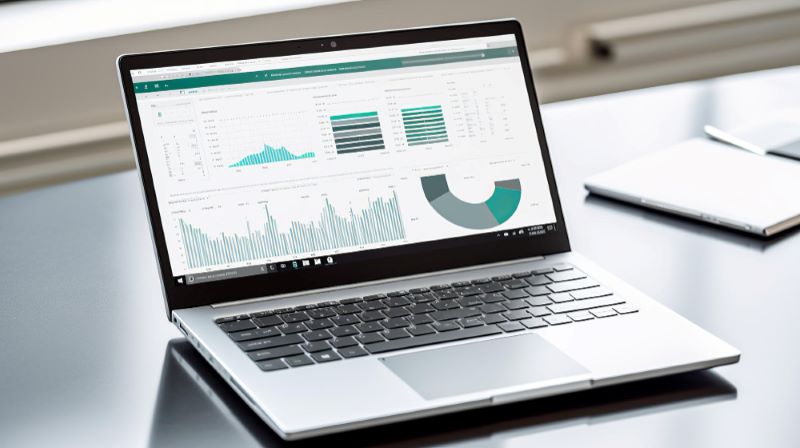Dynamic Pricing: What Is It, How Does It Work, and What Benefits Does It Offer?
In the cut-throat competition of the retail and eCommerce world, one strategy that enterprises keep going back to is dynamic pricing. While there are many opinions, both positive and negative, the fact of the matter is that it works.
Thanks to the ever-increasing demand for all sorts of products and services, retail enterprises have to consider pricing even more than other factors like brand image, quality, or availability. After all, for most of us, everything comes down to money.
This article will go deep into dynamic pricing, discussing every aspect and how you can use web scraping and proxies for this purpose.
What Is Dynamic Pricing?

There may be different ways to define dynamic pricing changes, but in its simplest form, it’s the practice of adjusting the price of a product throughout the day.
Many enterprises, like giant retailers and marketplaces, regularly utilize dynamic pricing. They change their prices based on various factors, including competitor prices, consumer demand, or region.
This is also different from seasonal pricing, as some commodities have variable pricing based on season, which, in turn, is based on the basic principle of demand and supply. In contrast, dynamic pricing may see several price changes in a single day, so it’s much more frequent than seasonal changes.
The main goal of such a pricing strategy is to increase profit margins, or at the very least, sell more products.
Retailers, in general, are at liberty to set prices for their offerings, so it’s a legitimate practice in many parts of the world. Besides, prices don’t always go up and instead go down to match or beat competitor prices.
Many people confuse dynamic pricing with personalized pricing, even though they are different. The latter is more user-centric as the pricing is determined by consumer behavior and, to some extent, the product’s value. For instance, sending an email with a markdown offer for a product a customer added to the cart and left would be considered personalized pricing.
Dynamic vs. static pricing
In comparison to dynamic pricing, static pricing stays the same day-to-day, and it’s what we usually call a fixed price. Even if a product’s prices changed due to inflation or other cost adjustments, it could still be seen as fixed rather than dynamic.
Many retailers and businesses intentionally choose to keep their prices constant. Sometimes, it’s necessitated by law, especially for essentials like food supplies or medications.
Pricing Strategies

To understand dynamic pricing, why it is used, and what benefit it may offer, you should first acquaint yourself with the different pricing strategies enterprises use. Dynamic pricing is based on three key pricing strategies followed in almost every industry:
Cost plus pricing
This is the basic pricing strategy or price calculation method. It considers the cost of making and distributing the product and the revenue margin. In its simplest form, this pricing adds the other costs needed to run the business as well as the profit margin on top of the actual cost. Even when using dynamic pricing initially, the price is often set based on cost and expected revenue. The price may then fluctuate later.
Competitive pricing
Competitive or competitor-based pricing mainly relies on the price the competitor is selling the product for. If the competitor lowers or increases the price, you do the same. Many businesses can swoop in and win sales just because of the price factor alone, either through price matching or lowering prices even further than the competitor.
Value-based pricing
Value-based pricing is based on the value customers assign to a product, which can vary by time and/or consumer. It’s based on the same idea of the value of fiat currency. The piece of paper only has value if people think and believe it does.
So if a consumer thinks of a product as more valuable than its cost-plus pricing, the retailer can sell the product for that price. As you can guess, this pricing strategy is also inherently dynamic.
For instance, if a product goes viral on social media, its demand will rise, and so will its worth in people’s eyes. This happens with apparel and shoes pretty frequently, thanks to celebrities and influencers.
Dynamic Pricing Strategy

By now, you understand how dynamic pricing works, but it’s not that simple. Enterprises with multiple stores and websites under their belt have to create an effective dynamic price strategy to rope in more customers and generate more revenue.
While competitor price plays an important role, there are other ways to strategize dynamic price of products or services, especially the best-selling ones:
Consumer profile or location
Price changes for products and services may also depend on who is buying or where they are buying from. This is a common practice in different industries, as you’ll learn in the examples of dynamic pricing.
The price may be different for a different set of consumers. Typically, it would be based on the location of the consumer. However, nowadays, with Artificial Intelligence (AI), pricing may even be based on other factors like demographics, device type (desktop or mobile), or past purchase history.
Time
Dynamic pricing may also be based on a certain time of the day. For instance, prices may be lower at night because fewer people are shopping at that time. Conversely, a retailer may choose to lower prices during the day when traffic is higher to get more sales.
There’s also a theory that flights are cheaper on some days of the week. Similarly, flights for the very next day can be super expensive regardless of availability. However, airline fare pricing is another topic in its own right, even though dynamic pricing is a big part of it.
Dynamic Pricing Examples

While dynamic pricing goes way back for some industries, other enterprises from different industries are recent adopters. Here are the common uses of dynamic pricing:
Airlines
Of course, we cannot cover dynamic pricing without talking about the airline industry. Airlines essentially pioneered the concept of dynamic pricing. However, unlike modern dynamic pricing used for websites, airlines change pricing based on demand, time of departure, the frequency of flights, and fuel prices.
The prices are dynamic because they can change at any time of the day. While these other factors matter, many airlines, especially budget airlines, keep competitive prices to sell more tickets. Airlines, as well as travel websites, use price monitoring to change their prices.
Ecommerce stores and marketplaces
Today, dynamic pricing strategy is more popular with the eCommerce industry. From specific-niche stores to huge marketplaces, many companies use dynamic pricing to increase sales, make a bigger margin, and get more customers.
Most retailers take the competitor-based approach rather than demographics when it comes to dynamic pricing. They utilize special tools to monitor and analyze competitors’ prices around the clock (more on that later) and highly sophisticated pricing software to analyze and calculate prices all day.
Hotels
Like the airline industry, the hotel industry also frequently uses dynamic pricing. These may be linked to seasons, holidays, peak demand, and competitors.
Hotels can reach their revenue goals monthly and annually using the dynamic price model. Prices may change every day or week, sometimes instantaneously, based on news or trends. Of course, prices increase in busy travel seasons like the summers or Christmas.
Similarly, other parts of the hotel industry, like car rentals and cruise packages, can also see their prices change dynamically.
Ride-sharing apps
Ride-sharing services typically decide the price at the moment. Although competitor price analysis doesn’t play a role here, the calculated fare is very dynamic. Besides the usual factors like distance, time, and fuel costs, the fare may also be based on demand. For instance, fares can automatically go up around rush hours, midnight on Fridays and Saturdays, and on bad weather days when it’s snowing or raining.
A subsection of the ride-sharing industry, food delivery apps also have a dynamic price model based on various factors, including demand.
Key Benefits of Dynamic Pricing

So why go through the hassle of adjusting prices every minute or so? How does it benefit enterprises? Won’t lowering prices, again and again, result in a loss? Well, it will make more sense once you know the main benefits of this commerce practice:
Boost sales and profit
The most obvious benefit of dynamic pricing is that businesses have the ability to increase sales, and by extension, their revenue and profit. According to one survey, 21% of companies from North America and Europe said they use dynamic pricing, while 17% said they plan on using it in 2021.
It’s no surprise that more and more enterprises and their subsidies are looking into such pricing tactics. Price remains an important buying consideration for millions of consumers, and in the online space, it’s very easy to compare prices.
According to Pricewaterhouse Coopers (PWC), 55% of consumers use Amazon to compare prices. In addition, numerous price comparison tools can compare prices on hundreds of websites for a specific product in a matter of seconds. Some plugins automatically detect and search for prices on alternative websites, presenting the user with the cheapest options available.
This means that a retailer has limited time to match their competitor’s price or go lower to make the sale. And when they do, consumers end up buying from the store offering the lowest price.
For large enterprises selling millions of goods in a single day, the margins may not matter as much as the sales volume, which is why they prefer dynamic pricing.
Adjust for demand
Most industries, by default, follow pricing based on the demand and supply structure. If the demand is high, prices go up and vice versa, at least those that are price elastic.
Not adjusting prices for demand would equate to missing out on an opportunity. More importantly, it can result in selling out completely, which isn’t quite as good as it sounds on paper. Availability is a major concern for today’s consumers who want things right now. They may not return to your store to buy something if what they want is unavailable. Dynamic pricing can help keep sales consistent and your inventory at least partially filled.
Awareness of competitors
Aside from some applications of dynamic pricing, most enterprises, especially those in the eCommerce sector, use competitive pricing. Monitoring and analyzing competitor prices and adjusting yours in time has far-reaching benefits. You may get the sale, but you’ll also get vital information about the competitors’ strategy. It may answer questions like:
- What products are the competition selling the most, and which ones are struggling?
- What products have a higher margin?
- When do they change their prices most often?
- What products are sold out or unavailable?
Learning consumer behavior
Just like you can learn a great deal about competitors by monitoring their prices, you can learn a great deal about consumers through your dynamic pricing practices.
Today’s consumers are much more sophisticated and calculating than they were ten years ago, and they have the tools to find the best deal on what they want. However, some consumers might care less about price and may be more concerned about quality or quick delivery. Learning how consumers react to changing prices can give you powerful insights about your own business and how you can improve it.
Loyal consumers that directly visit your website may buy the product whether it’s cheaper or not. Therefore, lowering prices may be in vain as they are already way ahead in the sales funnel.
How To Apply Dynamic Pricing

Setting up your websites for dynamic pricing requires effort and resources. You’ll need to formulate a strategy. How you will implement it is the main task.
Most enterprises with a huge web ecosystem, like marketplaces with thousands of vendors and millions of products, have to invest in the necessary technology infrastructure to make their prices dynamic. Of course, you can’t do this manually for products as it’s not humanly possible. Here’s a guide to implementing dynamic pricing for your business:
Determine whether you need dynamic pricing
This form of pricing model isn’t suitable for all types of businesses. You’ll mostly see big retailers and companies using it for marking their products up or down. For a small business, developing such a model would not make sense.
Similarly, some enterprises may find it challenging to implement because of the very nature of their product or service or the way they provide it to their customers. For instance, a hosting company that provides server space to clients may find it hard to charge different rates to different customers. Unlike a physical product sold once, hosting is an ongoing process and uses different resources. Managing different billing prices for different clients would quickly become a hassle.
Therefore, your first course of action is to complete a feasibility report that helps determine whether such a pricing strategy would even work for your unique business.
Define the dynamic pricing strategy
The next step is defining your pricing strategy. As explained earlier, you can base your changing prices on competitor prices, consumer demographics, or time. Use the recommendations made in your feasibility report.
It’s vital to tie the strategy back to your business goals, whatever they may be. Are you expanding into new territory? Are you trying for a new sales record? Or are you simply selling a unique niche of products/services?
Remember, the end goal with dynamic pricing is to increase your enterprise’s revenue.
Gather the right tools and resources
Dynamic pricing will become part of your website and inventory management system. For this purpose, you’ll need dedicated pricing software that tracks and changes prices in real-time. Most retailers rely on web scraping tools to gather information from competitor websites and use it to adjust prices.
Other than the dynamic pricing software that uses scraped data, you’ll need people who actively manage this software and ensure that it does its job well. Even though the process would be automated, some oversight will go a long way.
Establish some rules
It’s important to set some rules about dynamic pricing that the software and the team running it can follow. If you’re monitoring competitors’ prices and adjusting accordingly, there’s only so much discount you can offer. It may not make sense or even be ethical to change prices for some products.
Setting the rules will ensure your business stays out of legal trouble and your customers are happy too.
Test and monitor
Once you’re set, test and see how the prices are impacted. Treat it as a beta test for the initial period to see how it affects sales and revenue. You may have to make some tweaks accordingly.
Web Scraping for Dynamic Pricing

Web scraping or web extraction refers to collecting data from websites through web crawlers. These programs traverse web pages extracting important information and saving it in a useful format.
Web scraping is an integral part of dynamic pricing, especially competitive prices. With the help of a web scraper, the tool that performs this operation, you target your competitor websites for the same products and monitor prices round the clock.
Extracting your competitors’ prices is referred to as price scraping, which is common among major big-box retailers and eCommerce enterprises.
While there are numerous web scraping tools, and you can even make one from scratch, the actual web scraping process is complicated. This is because many websites don’t really like bots running around collecting data. They want to prevent competitors from price scaping. Nevertheless, there are workarounds which we’ll discuss in detail in a moment.
Price comparison is one of the major applications of web scraping. If you’re an eCommerce company, it can also help with social listening, i.e., finding what customers are saying about your brand. You can also use it for ad verification to ensure your competitors aren’t sabotaging your business by displaying bizarre ads on dubious websites (yes, that’s a thing).
How does it work?
The web scraper is essentially a bot that crawls a web page, reads the HTML code and the data it displays, and stores it as a database or a local file on the computer. Web scrapers have gotten incredibly sophisticated over the years, separating the useful from the useless pretty efficiently.
To scrape the web pages, you’ll need to specify which websites it must scrape. In other words, the web scraper will require the URLs of your competitors, so you must do a competitor analysis. This can be for specific categories of products or your entire business.
The web scraper resides on your machine and sends requests to the target website’s server. Once the request goes through, the program scrapes the page line by line, extracting data and saving it as a datasheet or a text file. That’s the main job of the scraper. After this step, the dynamic pricing software comes in, which analyzes the prices and automatically changes them based on the data extracted and the rules for changing those prices.
Price monitoring and price analysis
Price monitoring is the practice of tracking the prices of competitor offerings. The data the web scraper provides is what helps experts monitor pricing. Based on the data, it’s time to analyze the price.
Price analysis refers to evaluating a price without necessarily evaluating the cost or margin. It’s not a detailed analysis but a quick decision whether to change the price and decide what price to keep compared to the competitors’.
Price monitoring and price analysis in the context of dynamic pricing heavily rely on web scraping. In most cases, this monitoring and analysis process is also automated, and the pricing software carries out the change. It’s linked with the website, so prices are updated almost instantaneously.
What data should you scrape?
You’ll need to define and instruct the scraper bot on what data you need in the first place. A web page may display multiple products as well as other irrelevant content. However, you’re only interested in the data that helps you gauge the price of the product in question.
Now, you’re probably thinking all you need is the name and price of the product. Not really! For a detailed price comparison and, consequently, effective dynamic pricing, you’ll need some other useful data, such as the product brand name, product category, and product description as well. You may get both before and after prices for discounted products.
All this data must be organized in an easy-to-use format so that your auto-pricing tool can analyze it clearly and make the right decision. The data will also help it follow the rules you have set. For instance, if you’ve temporarily stopped dynamic pricing for a particular category, it would know which products to stop monitoring. If you scraped just the product name, it might not apply the rule so effectively.
Why use a scraping bot?
Using a scraping bot is your best bet when web scraping for price tracking and comparison. Manually scraping through web pages or even taking screenshots of them is virtually impossible given the sheer number of web pages you’ll be targeting. A web scraping bot can do this in a matter of seconds. Not only does it do it faster, but it can also do it properly so your automated pricing tool can change prices right on time. By using a scraping bot, you free yourself to focus on the important business decisions, reaping the many benefits dynamic pricing techniques have to offer.
Even if you choose to build your tool from scratch, it may not be as sophisticated as an out-of-the-box scraping bot. Scraping Robot is one such example of a web scraping tool that does all the work for you. Moreover, it handles the proxies as well, all on its own. This brings us to another important consideration for you: proxies.
Price Scraping and Proxies

When it comes to price scraping for dynamic pricing applications, you’ll need proxies.
You see, web scraping has its challenges to deal with as many websites have certain protocols and limits in place that can hinder your scraping efforts. This can essentially beat the purpose of web scraping and dynamic pricing in the first place.
What are proxies?
Proxies are servers that reroute your requests to other servers. It’s nothing but a middleman routing the requests from a machine or server to another server and back. But why use the middle man?
Every device we use, whether a PC or mobile, has a unique IP (internet protocol) address that helps identify it. It may even reveal your exact location. However, when the request goes through the proxy server, the server sees the IP address of the proxy. This has multiple benefits, but mainly, protecting your real identity.
Proxies are like any other server with built-in resources like CPU and memory, as well as bandwidth.
Nowadays, web scraping without proxies is virtually impossible.
Why use proxies for your dynamic pricing strategy?
Here’s why you need proxies for scraping your competitors’ websites and extracting pricing information:
IP bans
Many websites don’t allow web scrapers for a variety of reasons. Some don’t want them hogging the traffic, while some don’t want the competition to track their web pages whatsoever. So to stop that, they use IP bans.
Once they detect a scraping bot, they can simply blacklist the IP address that the requests are originating from. As a result, the scraping tool is unable to access the web pages from that website or any other websites associated with it.
However, when you use proxy servers, especially a lot of them, the requests go through those, and even in the case of getting banned, the proxy IP gets banned, not your actual machine’s IP address. That said, just by using a proxy pool (multiple proxies), you reduce the chances of getting banned significantly.
Rate limits
To prevent an abnormally large number of requests from a specific IP address, web servers also keep a rate limit or request rate limit. What this means is that there can only be a limited number of requests from a single IP address in a given frame of time. If you exceed that, you can get banned temporarily or even permanently.
Proxies can help circumvent this issue by using many proxies, with each one having its unique IP address. More importantly, a proxy manager can switch or rotate proxies to avoid reaching the rate limit. This software also applies to outgoing requests, so no proxy sends an unusually large number of requests to a single web page or website.
Geotargeting
Do you know how one website appears different in one country and different in another? Well, that’s geotargeting. It basically presents products and content based on location.
So, if you desire to scrape data off a website’s location or region-specific version, you need to send the requests from a local IP address, i.e., one that is located in the same region.
Proxies can make that achievable if they are present in the same region. Although the request is initiated from another location, the proxy makes it look as if it’s coming from the same region.
Types of proxies
There are mainly three kinds of proxies you can use with your web scraper. However, the first two are used most commonly.
Residential proxies
Residential proxies, as the name indicates, have an IP address that identifies them as belonging to an average user sitting in their home. This is because these IP addresses are assigned by an internet service provider (ISP).
As these are resident proxies, these are static, which means their location will stay the same. However, that works in your favor as these are extremely low-risk. When web scrapers use residential proxies, the requests they send are treated as if an actual user is sending, as long as the limit rate isn’t crossed.
Another advantage is that you can pick residential IPs from your target locations easily. Such IP addresses are available from every major region of the world.
Data center proxies
Such proxies or IP addresses are housed in data centers and don’t have any physical address. These are a lot more affordable than residential proxies. Therefore, you can buy these in bulk for your enterprise’s dynamic pricing operation.
These do have the same subnet block range, so if not used the right way, they can get detected by web servers. However, that all comes down to the proxy provider that you’re using and what protocols you have in place when using these IP addresses.
Mobile proxies
Mobile proxies reflect the IP address of a mobile phone. As a result, the request-receiving server thinks the request is coming from a mobile device. Such IPs can be helpful if you specifically want to scrape the mobile version of a website.
These aren’t as popular for web scraping as the other two because these are incredibly expensive. Also, residential and data center IPs are good enough for just web scraping.
Best Proxies for Price Scraping

If you’re looking for the most reliable and undetectable proxies, go for the residential proxies that Rayobyte provides. As one of the most affordable proxy providers, you can rest assured that your dynamic pricing scheme will work effortlessly. Your scraping requests will route through proxies located in over 27 Countries, which pretty much covers the whole world. Plus, these are all ethically sourced, which reduces the chances of IP bans even further. The biggest benefit is that it’s a managed proxy solution, so you pretty much just need to embed it into your web scraper, and you’re all set.
For larger enterprises looking for large proxy pools, Rayobyte’s Data Center Proxies are the way to go. You can benefit from over 300,000 IP addresses, all of which are managed efficiently, so the web scraping never takes a rest. After all, dynamic pricing is round-the-clock running practice. With a whopping 25 petabytes per month, these proxies are capable of scraping through data-heavy web pages of products that showcase a lot of images, videos, and other graphics. You also get API access should you want to manage the proxies in-house.
You’ve not bound to any plans as such, as you can increase or decrease the proxy pool as per your needs. The pricing is based on usage, so you pay according to the proxies you’ve used.
Conclusion

Dynamic pricing is a legitimate and widely used technique to compete in the market, especially for big-box retailers that utilize economies of scale to bring down prices easily.
Consumers, on the other hand, want to find the lowest prices. This allows fair competition as far as prices go and is not so unfair.
You’ll need to employ web scraping to scrape necessary data to compare prices to use dynamic pricing. For that, a scraping bot along with a proxy pool from a reliable proxy provider is more than enough. But first, you need a solid dynamic pricing strategy, which should consider all the costs and the risks. More importantly, you need to analyze if such a pricing strategy aligns with your business goals, as it may not be for everyone.
Similarly, there’s only so much discount you can offer to cut the competitors. Therefore, it’s important to strategize and set some rules for the lower price threshold to ensure dynamic pricing doesn’t end up costing you instead.
Frequently Asked Questions
Why is dynamic pricing used?
Dynamic pricing is typically used to beat the competition and earn more sales. However, that’s not the only use as some businesses use it to offer different prices in different locations. Dynamic prices can also help accommodate demand and supply in some ways, although that’s not the primary reason for using them.
Many eCommerce companies, especially the big ones, heavily rely on dynamic pricing to keep the market competitive.
What is price matching?
Price matching, also called price matching guarantee and price adjustment, is a pricing technique where the seller matches the low price of another retailer.
For example, you bought a vacuum cleaner from Retailer A that offers price matching. You found the same vacuum cleaner on Retailer B at a lower price. Since the former guarantees a price match, they will sell you for the same price or if you’ve bought it already, refund the difference.
Price match is somewhat similar to dynamic pricing, except the latter is a more proactive approach. By using price matching, the retailer does not lose the business to another retailer offering at a lower price.
This is another way of guaranteeing that the retailer is offering the lowest price on the market because if they don’t, they are ready to refund the difference.
What is variable pricing?
Variable pricing refers to pricing based on the demand and supply levels at the current level. Such prices can change overnight or during the day. However, variable pricing is considered different from dynamic pricing as it solely depends on supply and demand.
The classic examples of variable pricing include stocks, foreign exchange, auctions, and commodities like electricity, gas, and gold.
Is dynamic pricing legal?
Dynamic pricing is legal as long as it doesn’t discriminate against race, ethnicity, age, gender, or religion. For most products that are not regulated by the government, sellers are at liberty to set prices. They have the right to change prices whenever they want.
Dynamic pricing tactics are usually used to outperform the competition. Sometimes prices differ for two consumers, but that’s usually based on factors other than race, ethnicity, or gender.
What is price scraping?
Price scraping describes the practice of extracting (scraping) price-related data from websites, often for dynamic pricing through web scrapers. These programs turn the pricing data into a useful format that the company can then use to analyze their competitors’ pricing.
Price scraping is a common practice in the world of large-scale eCommerce, where competitors are often vying for the lowest price to attract customers and make sales.
Special price scaping tools scrape for competitor prices and automatically adjust prices accordingly based on a set of rules.
The information contained within this article, including information posted by official staff, guest-submitted material, message board postings, or other third-party material is presented solely for the purposes of education and furtherance of the knowledge of the reader. All trademarks used in this publication are hereby acknowledged as the property of their respective owners.





